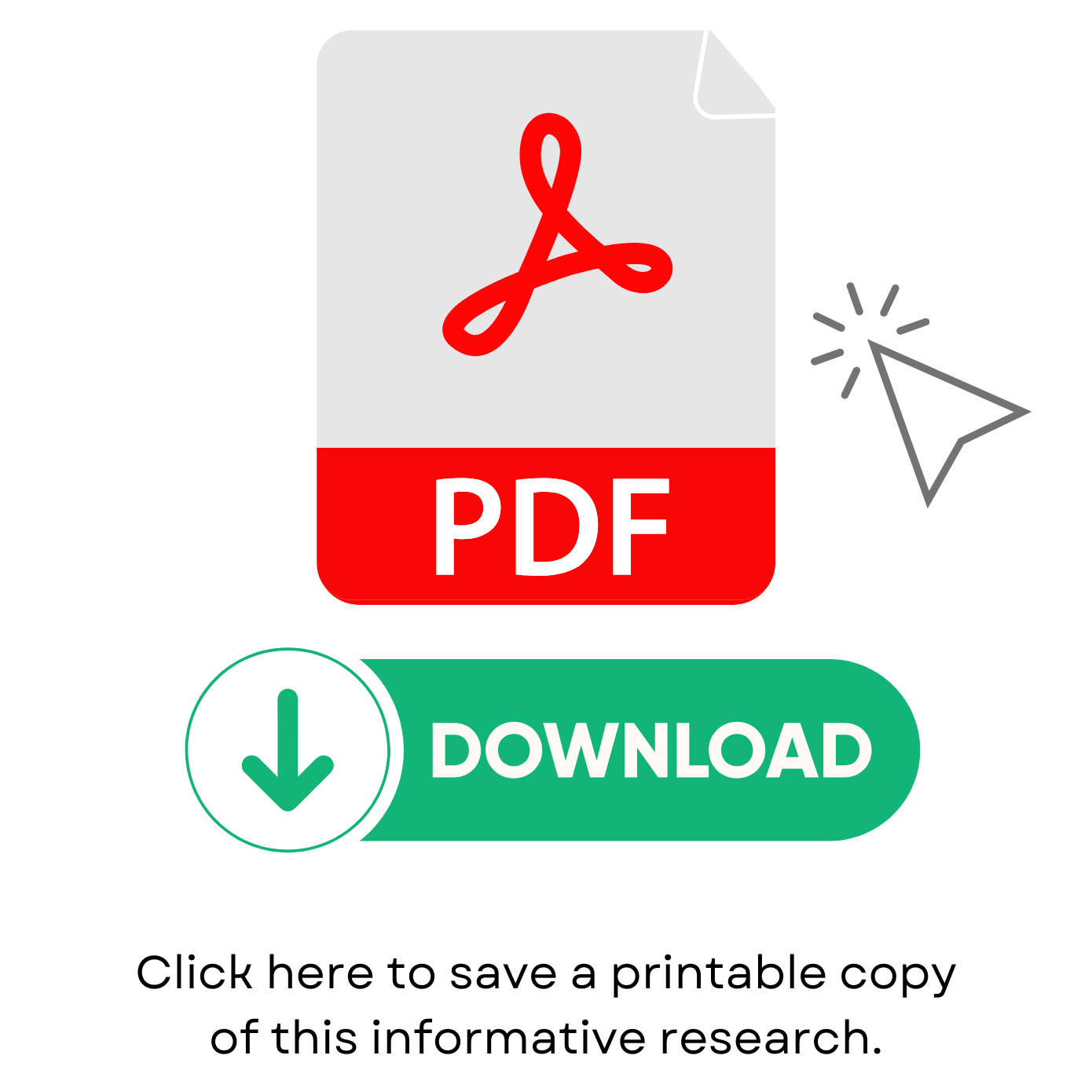
Scleroderma Medications Guide (Canada)

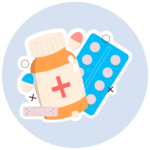 |
Although there isn’t a cure for scleroderma, there are effective treatment options that can help alleviate symptoms and slow down disease progression. Current prescription and over-the-counter medication are designed to treat scleroderma by targeting:
|
As a medical doctor or health care professional caring for persons with scleroderma, it is important to ensure patients understand the nature of the medications they may be prescribed and how they work to help control disease symptoms from progressing. Patient knowledge is powerful, as it reduces fear and increases compliance, resulting in a higher percentage of successful treatment.
The following guide includes a list of drugs commonly prescribed by doctors in Canada to treat patients with scleroderma. The list is provided for informational purposes only, and is not to be taken as an endorsement of any drug by Scleroderma Association of B.C.
Many of these drugs are prescribed by doctors, but have not been proven useful and should be used only with caution and supervision. It is important to consider, that not every medication is appropriate for every patient. The treating physician, who is familiar with the patient’s medical history, health status and disease progression, will be able to determine the most appropriate treatment options.
Symptoms and Treatments: Click The Title to Learn More
Raynaud's Phenomenon
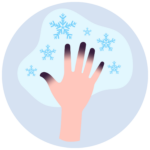 |
RAYNAUD’S PHENOMENONRaynaud’s is present in up to 95% of people with scleroderma. Whitening of fingers and/or toes triggered by cold or severe stress. The whiteness phase can be followed by a blue phase and then a red phase. |
|
CALCIUM CHANNEL BLOCKERS
Action: Relax blood vessels
PHOSPHODIESTERASE TYPE 5 INHIBITORS
Action: Relax blood vessels
Action: Relax blood vessels ANGIOTENSIN II RECEPTOR ANTAGONISTS
Action: Block constriction of blood vessels |
TOPICAL NITRATES
Action: Relax blood vessels
PROSTAGLANDIN DERIVATIVES
Actions: Relax blood vessels Used for severe, refractory or complicated Raynaud’s
ALPHA-ADRENERGIC BLOCKERS
Action: – Relax blood vessels
OTHER
Action: Unclear |
Gastrointestinal Symptoms
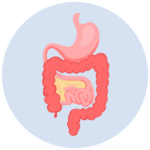 |
GASTROINTESTINAL SYMPTOMSGastrointestinal disorders affect the vast majority of patients. Gastric reflux is a common symptom that manifests itself by a burning sensation radiating up to the throat after meals and may cause inflammation of the lining of the esophagus (esophagitis reflux) if left untreated. |
|
ANTIACIDES
Action: Neutralize stomach acidity HISTAMINE H2-RECEPTOR BLOCKERS
Action: – Inhibit stomach acid secretion |
PROTON PUMP INHIBITORS
Action: Inhibit stomach acid secretion OTHER
Action: Coat esophagus & stomach; forms protective barrier
|
Swallowing Difficulties
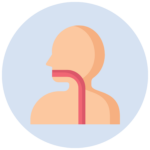 |
SWALLOWING DIFFICULTIES |
GI STIMULANTS:
Action: Stimulate intestinal muscle contractions, may improve heartburn
Action: Stimulate intestinal muscle contractions, may improve heartburn
|
Action: – Stimulate intestinal muscle contractions
Action: An injectable medication. Can be helpful in very severe cases for improving bowel motility
|
Constipation
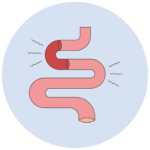 |
CONSTIPATION |
|
BULKING AGENTS
Action: Improve stool consistency, shorten colon transit time and increase frequency of bowel movements SOFTENING AGENTS
Action: Soften stool
|
OSMOTIC AGENTS
Action: Keep liquids inside bowels to soften stools
Action: Keep liquids inside bowels to soften stools
|
Small Intestine Dysfunction: Bacterial Overgrowth/Diarrhea
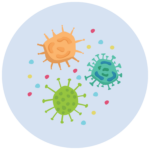 |
SMALL INTESTINE DYSFUNCTION:
|
Broad Spectrum Antibiotic use is the mainstay of treatment for this complication. There are many potential approaches to this therapy. For example: Antibiotics are given in 2–3 week courses followed by a 1–2 week drug holiday. Generally a few cycles of this treatment can allow for quiet periods of a few months to a few years. However, some persons may require almost continuous antibiotics.
Alternating antibiotics and increasing the antibiotic-free period will decrease the development of resistant strains of bacteria.
Note: Prolonged use of Broad Spectrum Antibiotics may be complicated by superinfection.
BROAD SPECTRUM ANTIBIOTICS
Action: Decrease Bacterial Overgrowth
EXAMPLES INCLUDE:
Side Effects: Nausea, vomiting, diarrhea, abdominal pain, photosensitivity, skin rash.
Side Effects: Metallic taste, headache, diarrhea, reduced appetite, dizziness, nausea.
Side Effects: Drowsiness, dizziness, nausea, vomiting, diarrhea.
|
Side Effects: Diarrhea, nausea, vomiting, abdominal discomfort, skin rash, vaginitis, pseudomembranous colitis.
Side Effects: Altered taste (dysgeusia), diarrhea, nausea, heartburn,
|
Joint and Tendon Pain
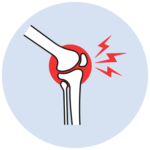 |
JOINT AND TENDON PAINJoint pain is common. It is caused by inflammation of the joints and tendons, which quite often leads to joint swelling and stiffness that can become quite debilitating. Muscular pain (myalgia) can be intermittent or continuous. It can also be associated with muscle weakness (myositis). Symptoms include difficulty in climbing stairs, lifting objects and getting up, and also difficulty swallowing. |
|
NON-STEROIDAL ANTI-INFLAMMATORY DRUGS (NSAIDS)
Action: Suppress inflammation
|
COX-2 INHIBITORS
Action: Suppress inflammation ANTALGICS
Action: Relieve pain
Action: Relieve pain
|
Pulmonary Fibrosis/ Interstitial Lung Disease
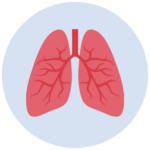 |
PULMONARY FIBROSIS/ INTERSTITIAL LUNG
|
|
IMMUNOSUPPRESSANTS
Action: Suppress immune response; anti-fibrotic effect
Action: Suppress immune response
Action: Suppress immune response
Action: Suppress immune response |
Action: Suppress immune response
Action: Suppress immune response ANTI-FIBROTIC DRUGS
Action: Blocks the activity of fibroblasts which contribute to tissue fibrosis
|
Pulmonary Arterial Hypertension
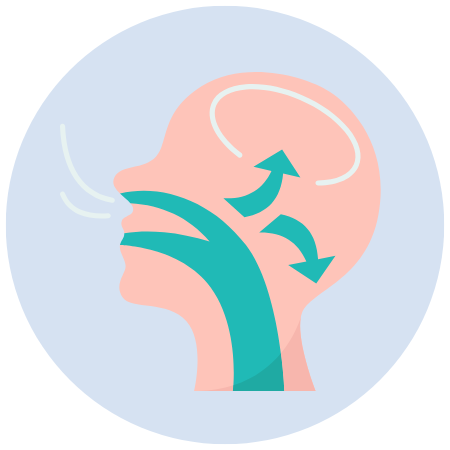 |
PULMONARY ARTERIAL HYPERTENSIONIncreased pressure in the pulmonary arteries due to the narrowing of small arteries in the lungs. Blood flow to the lungs is significantly restricted, making the heart work harder to pump blood through the lungs. |
Patients diagnosed with pulmonary arterial hypertension should be referred to a pulmonary hypertension center for experienced evaluation and management of this serious scleroderma complication.
|
ENDOTHELIN RECEPTOR ANTAGONISTS
Action: Act on blood vessels
Action: Act on blood vessels
Action: Act on blood vessels PROSTACYCLIN DERIVATIVES
Action: Act on blood vessels, inhibit platelet aggregation
Side Effects: Pain at infusion site, headache, cough, diarrhea, nausea, flushing, jaw pain, skin rash, edema. |
PROSTACYCLIN RECEPTOR AGONIST
Action: Act on blood vessels SOLUBLE GUANYLATE CYCLASE STIMULATOR
Action: Act on blood vessels PHOSPHODIESTERASE TYPE 5 (PDE5) INHIBITOR
Action: Act on blood vessels
Action: Act on blood vessels COMBINATION OF TREATMENTS
Actions and side effects: See sections on individual drugs above. |
Renal Crisis/ New Onset Hypertension
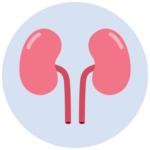 |
RENAL CRISIS/NEW
|
|
ANGIOTENSIN CONVERTING ENZYME INHIBITORS
Action: Block constriction of blood vessels
|
If taking corticosteroids, monitor your blood pressure frequently, and report changes to your healthcare provider immediately. Warning About Corticosteroids and Renal Crisis Corticosteroids, such as Prednisone and Medrol, have been used to treat several complications of systemic scleroderma, such as pulmonary fibrosis, pruritus (itchy skin), and joint pain. Recent findings indicate that corticosteroids can be implicated in precipitating renal crisis. Therefore, the medical community has concluded corticosteroids should be used cautiously, in a carefully screened patient population. For example: to manage patients who also have myositis (muscle inflammation). Anyone taking corticosteroids should monitor blood pressure frequently, and report changes to the healthcare provider immediately.
|
Skin Fibrosis
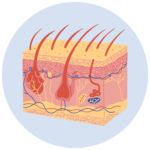 |
SKIN FIBROSISThickening and loss of elasticity of the skin on different parts of the body. Hence the name «scleroderma», which means hard skin. |
|
IMMUNOSUPPRESSANTS
Action: – Suppress immune response
Action: – Suppress immune response and anti-fibrotic effect |
Action: Suppress immune response
|
Sjögren's Syndrome
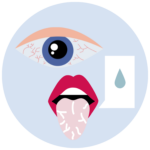 |
SJÖGREN’S SYNDROMESjögren’s syndrome is an autoimmune disease affecting mainly lacrimal glands (which produce tears) and salivary glands. This syndrome is caracterized by symptoms of dry mouth and dry eyes. Sjögren’s syndrome can coexist with systemic sclerosis. |
|
PRESCRIPTION DRUGS
Action: Improves dry mouth symptoms
Action: Stimulate saliva secretion |
OVER-THE-COUNTER PRODUCTS DRY MOUTH
Action: Saliva substitute, alleviate dry mouth DRY EYES
Action: Provide tear-like lubrication |
Localized Scleroderma
 |
LOCALIZED SCLERODERMALocalized scleroderma is a fibrotic disease of the skin and sometimes of the underlying tissues, but does not affect internal organs. It affects mostly children, but can also occur in adulthood. There are several forms of localized scleroderma, including circumscribed or plaque morphea (involving one or multiple well-defined, oval to round areas of skin thickening), generalized morphea (when at least 4 plaques involving at least 2 anatomical sites are present), linear scleroderma (characterized by tight, thick bands, frequently affecting extremities) and scleroderma en coup de sabre (a type of linear scleroderma that affects the forehead and scalp area on one side of the head, with resemblance to the cut of a saber). Raynaud’s phenomenon is usually absent in localized scleroderma. |
|
MEDICATIONS LOCAL TREATMENTS
Action: Anti-inflammatory and anti-fibrotic effects
Action: Anti-inflammatory and anti-fibrotic effects
Side Effects: Burning, itching, erythema, acne, folliculitis, headaches, skin infection, hypersensitivity reaction.
Side Effects: Skin irritation, itching, tingling sensation, local erythema, dermatitis, skin dryness, skin photosensitivity. |
PHOTOTHERAPY Action: Decrease skin thickening SYSTEMIC TREATMENTS
Action: Suppress immune response
Action: Suppress immune response and anti-fibrotic effect
Action: Suppress inflammation |
Skin Itching/ Pruritus/ Dryness
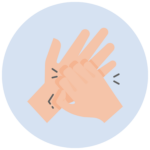 |
SKIN ITCHING (PRURITUS)/DRYNESSItch (pruritus) and skin dryness are frequent symptoms in systemic sclerosis. They are usually caused by skin irritation due to inflammation and fibrosis. Pruritus can also sometimes be a sign of liver disease associated with systemic sclerosis (primary biliary cholangitis). |
To relieve dry itchy skin, it is necessary to moisturize often. Also, the skin must be protected from harsh detergents, hot water, and the cold winter air, all of which will rob moisture from the skin. Using a humidifier in the home during the cold winter heating months to replace much-needed moisture into the air may be helpful. Not everyone will have the same response to every product. A few products may need to be tried until one is found to work for the patient.
|
OVER-THE-COUNTER SKIN LOTIONS
Action: Moisturize skin |
ANTIHISTAMINES (PRESCRIPTION)
Action: Block histamine response, thereby decreasing itching
|
At least one of the medications listed in each scleroderma symptom category is contained within the B.C. PharmaCare Formulary.
To consult the full version of the Scleroderma Medications Guide, download the PDF here:






